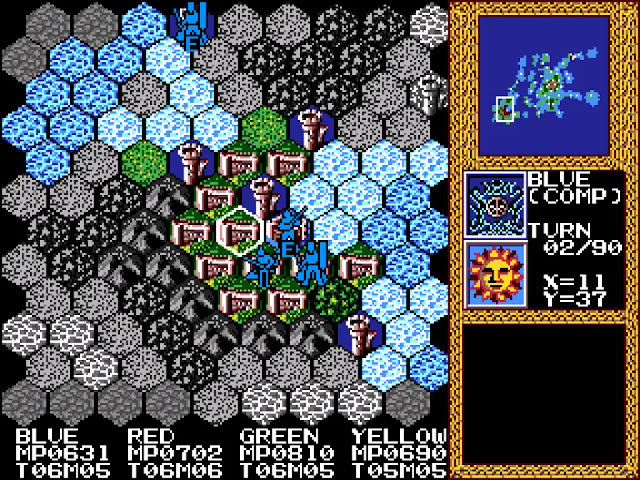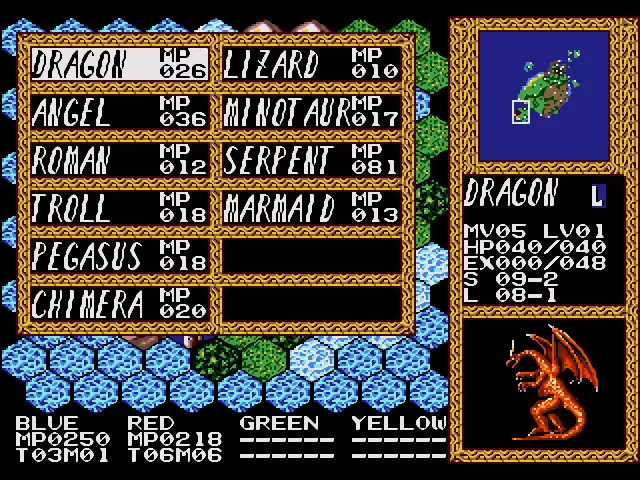Master of Monsters by developer and publisher System Soft—SEGA Genesis retro reflection written by Nick with a purchased copy.
Estimated reading time: 4 minutes
A recent review of mine had me reflecting back on an old favorite of mine for the SEGA Genesis – Master of Monsters. This was not a particularly well-known title, but it came out at a time when I was regularly losing myself in the RPG / Strategy hybrid genre.
If you had read my somewhat recent Brigandine review, I made an off-hand reference to Master of Monsters. The two games share a lot of really similar DNA. At their core, you pick a summoner who then creates and moves monsters around a game board comprised of hexagons. These battles gain experience through combat, gaining levels and evolving into creatures with better stats. Terrain plays a factor in both movement speed and innate hit/miss as well. It’s all pretty standard stuff, but the parallels between the two games is hard to ignore.
In terms of the gameplay structure, the bulk of your time is spent on single player campaigns that tend to have some sort of a gimmick during the last stage. An example might be specific types of environments or enemies that are much easier to beat if you have the right kind of monster army assembled. Conversely, if it’s your first time hitting said stage – odds are you won’t be properly prepared for it and quite often I would lose the first time around. That sort of trial and error certainly made Master of Monsters rather grindy, even for a strategy game.
Some monsters are handy in almost all scenarios. Dragons are of course the slayers of all, while others like Great Angels due to their mobility and long-distance damage and decent healing. These types of monsters have good application in almost all maps, while something like the Siren or Big Serpent have their uses – but those use cases take a big hit on solid land versus being in the water. Your primary wizard also has access to some pretty powerful spells that can help tilt the battle to your favor. However, that comes with risk as a dead wizard means your game is over. By the same token? I kind of hate the meteor spell, as it feels overly powerful both when used – or used against you.
Once you become familiar with the different campaigns and monster types, Monster of Monsters actually becomes relatively easy in my opinion. Maybe because I’m patient or just have a tendency to think about long term creature development (King Dragon is incredibly powerful, but slow to build up). Like other games of this genre, the pacing tends to be slow and one of the biggest knocks against Master of Monsters in my mind was the relative lack of story. Combined to Brigandine’s very elaborate story involving multiple layers depending on which kingdom you use, Master of Monsters has very little meat on its narrative bones. Admittedly, it’s pretty unfair to compare a game from thirty years ago to a modern era one, but there were other strategy games from that era (Shining Force and Warsong spring to mind) that were able to do a much better job on that front as well.
At the end of the day, I wouldn’t go quite so far to say Master of Monsters is a must-play for fans of the SRPG genre, but I do feel it was a pretty underappreciated little gem back in its day. It spawned some sequels that I never played (including a version of the game that apparently used items, giving it a slightly stronger RPG feel and more akin to Brigandine’s equipment system), but would certainly like to at some point If given the chance. Still, having revisited Master of Monsters for the first time in over a decade so I could write this Retro Reflection, I came away with an even stronger impression that Brigandine owes a good deal of its framework to Master of Monsters.

















0 comments:
Post a Comment